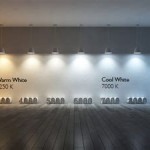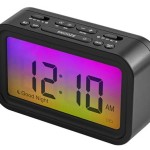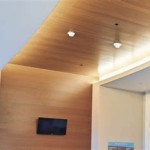The Warmth of LED Lighting: Considerations for Creating Inviting Spaces
Light plays a pivotal role in shaping the ambiance and atmosphere of any space. When it comes to creating inviting and comfortable environments, warm LED lighting holds immense potential. With its ability to mimic the soft, cozy glow of traditional incandescent bulbs while offering energy efficiency and longevity, LED warm light has become a preferred choice for a wide range of applications.
Understanding Color Temperature
Color temperature, measured in Kelvins (K), determines the perceived warmth or coolness of a light source. Warm light has a lower color temperature, typically ranging from 2700K to 3500K, emitting a cozy and inviting glow. In contrast, cool light, with higher color temperatures above 4000K, produces a more energizing and focused ambiance.
Choosing the Right Warmth Level
The appropriate warmth level for an LED light depends on the desired atmosphere and functionality of the space. For living rooms, bedrooms, and other areas where relaxation and comfort are paramount, warmer color temperatures between 2700K to 3000K create a cozy and inviting ambiance. For kitchens, bathrooms, and workspaces that require better illumination, slightly cooler color temperatures around 3200K to 3500K provide sufficient brightness without sacrificing warmth.
Benefits of Warm LED Lighting
Warm LED lighting offers numerous benefits beyond its aesthetic appeal:
- Energy Efficiency: Compared to traditional incandescent bulbs, LED lights consume significantly less energy while producing the same level of illumination, reducing energy costs.
- Long Lifespan: LED bulbs have an exceptionally long lifespan, lasting up to 50,000 hours or more, minimizing the need for frequent bulb replacements.
- Eye Comfort: The warm glow of LED lights minimizes glare, reducing eye strain and discomfort, especially during prolonged exposure.
Applications of Warm LED Lighting
Warm LED lighting finds application in various settings:
- Residential: Living rooms, bedrooms, dining rooms, and other living spaces where comfort and coziness are desired.
- Commercial: Restaurants, cafes, and hospitality venues seeking to create a welcoming and ambient atmosphere.
- Healthcare: Hospitals, clinics, and nursing homes where warm lighting promotes a relaxing and calming environment for patients and staff.
- Architectural: Accentuating architectural features and creating visual interest in building interiors and exteriors.
By carefully considering color temperature and choosing the right warmth level, warm LED lighting can effectively enhance the ambiance and create inviting and comfortable spaces. Whether it's a cozy home, a welcoming business establishment, or a healing healthcare facility, warm LED lighting plays a vital role in shaping the atmosphere and contributing to the overall well-being of the occupants.

Colour Temperature Warmth And Coolness Of Light Explained

Guide To Choosing The Led Light Colour Temperature You Need

How To Choose Suitable Led Color Temperature Light Manufacturer
Led Bulb Color Temperature Guide

The Difference Between Led Color Temperatures Spot

How To Choose The Right Color Temperature Nakashi Lighting

Which Colour Temperature Shall I Choose For My Led Light Energuide

The Difference Between Warm White And Cool Led Lights

Soft White And Other Led Color Temperatures Philips Lighting

Murphy Lightings
Related Posts








